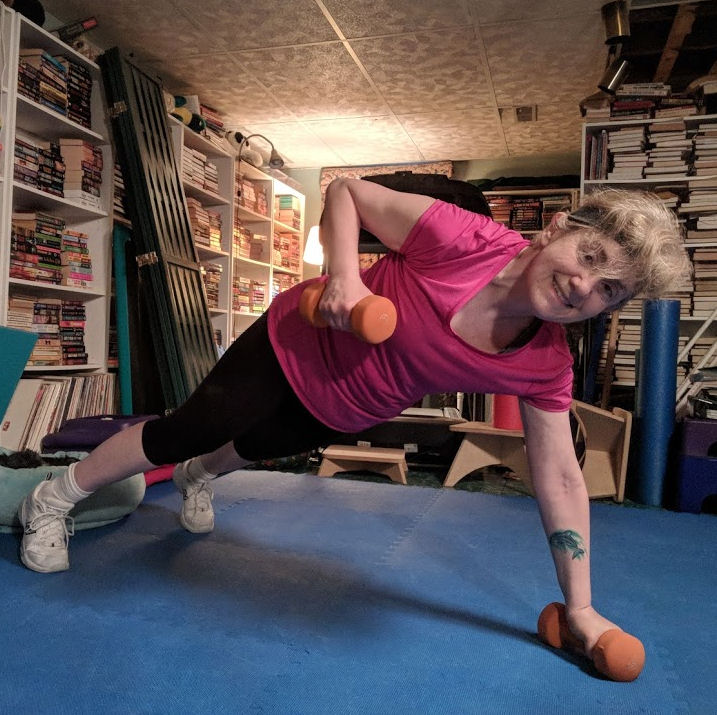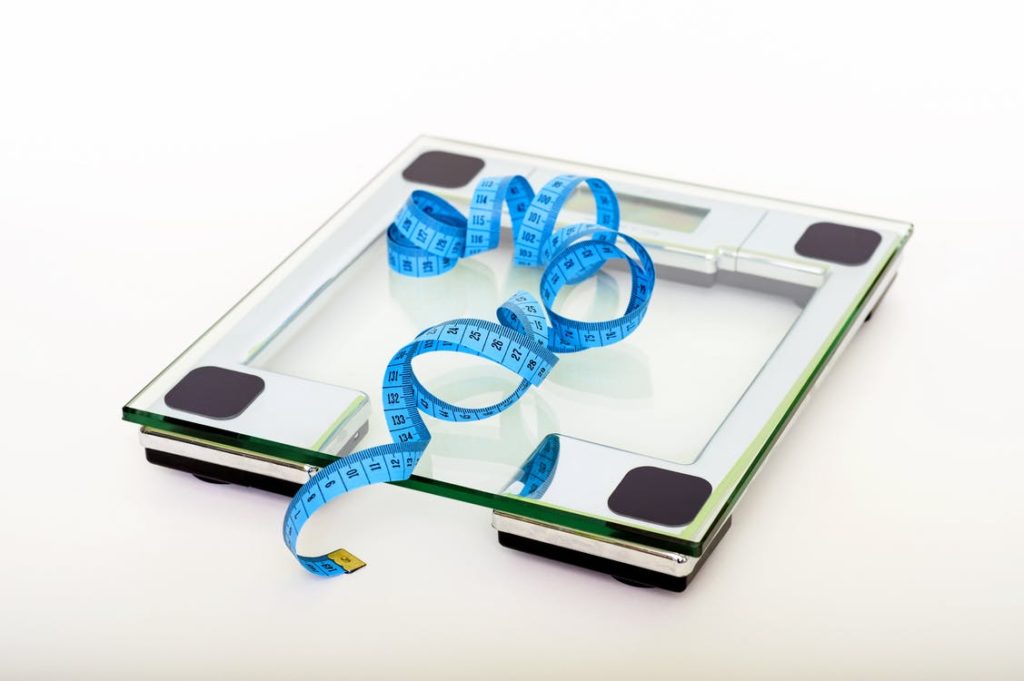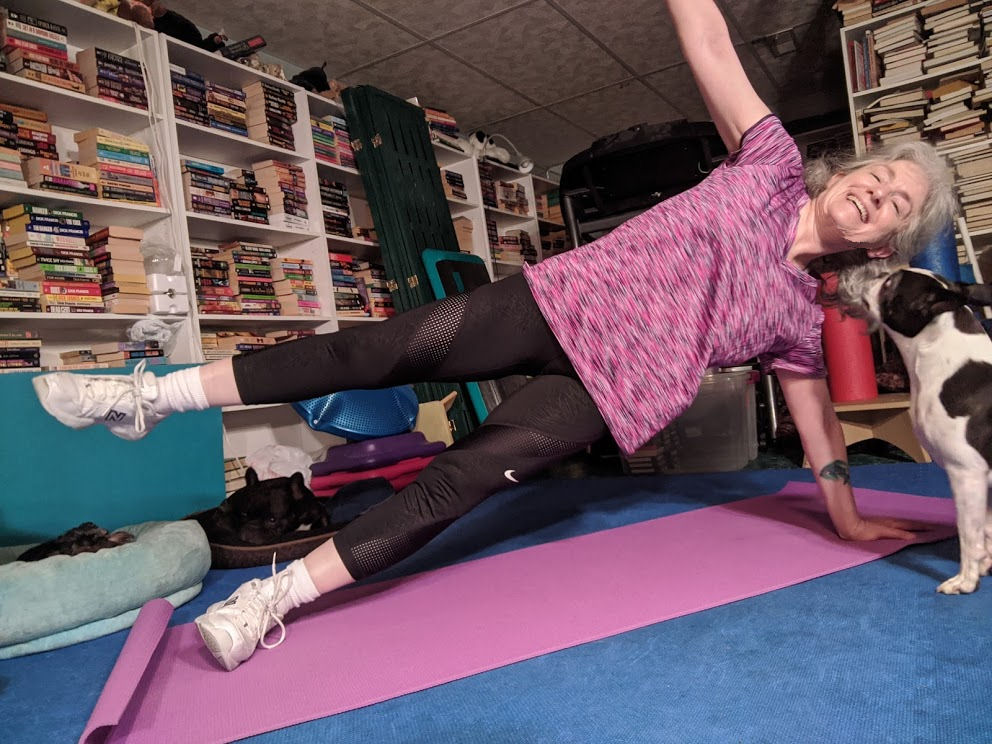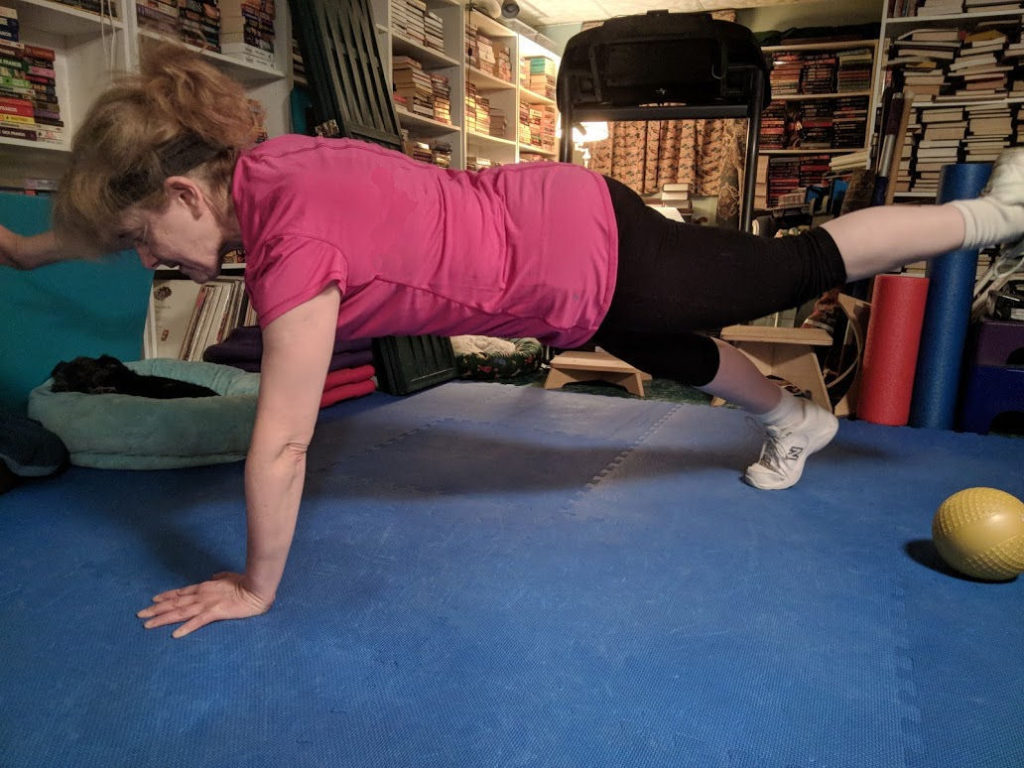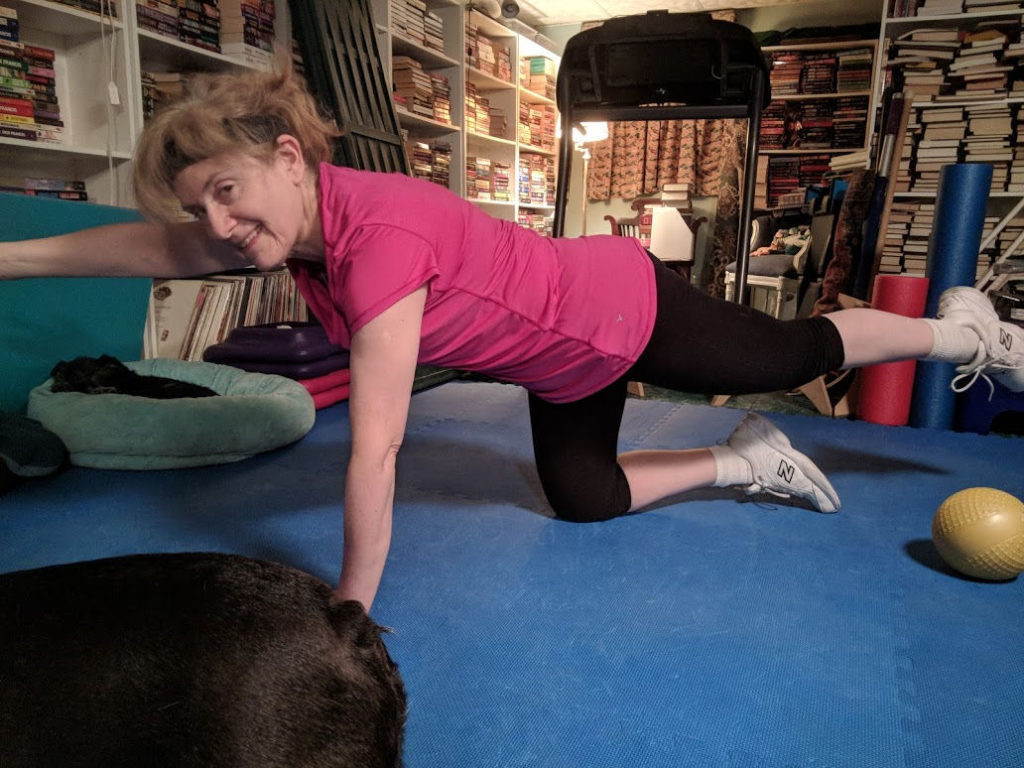I’ve said it before – I don’t like to work out. I hate exercising. I hate getting out of breath and sweaty. I hate running. I hate working my joints when they don’t want to get worked.
But I do it.
The benefits
I do it because of the benefits I know I’m receiving from exercise. Exercise helps my aging brain hold onto memories, as well as learn new stuff. Exercise helps my bones and muscles stay strong. Exercise helps my endurance. Exercise helps me sleep better.
So I do it. But I don’t have to like it.
Maximize my focus, minimize my time
So when I exercise, I want to make sure that I’m maximizing my time and not work any longer than I have to. So I focus on what I’m doing to make sure that I’m really targeting what I’m supposed to be targeting.
Years ago, when I went to a health club to exercise I saw women (it was an all-women health club) lift one-pound weights with no attention to form. I saw women mosey on the treadmill while looking at their phones. And I saw women in group classes just going through the motions.
Time to kill? Not me!
I wondered about those women. They must have had so much time on their hands, they could afford to be at the health club for hours at a time and burn fewer calories than I did in my half hour or 40 minutes. (How rude were those women – not giving their all to that instructor? She was giving her all to them! The least they could do was reciprocate.) But I had to get back to work! I was on a deadline! I had to put my time in on the stair machine or treadmill or rowing machine or free weights, clean up and get back to work.
And now – I work out at home and I still hate it. But I give my all. If I’m going to devote that much time to something I dislike doing, I’m going to do it well and not feel guilty about it. Going through the motions doesn’t do anyone any good. I’m exercising for a reason so I’ll do it right!
The secret to success
The secret is to just pay attention. Focus on what you’re doing. If you can’t do a move properly, modify that move to give you maximum benefit now and help you get stronger or more flexible so you are able to do that move the right way at some point in the future. Get the maximum benefit from every exercise you do. From your warmup through the workout to your cool-down.




